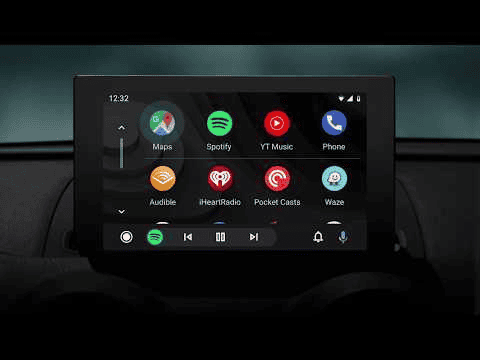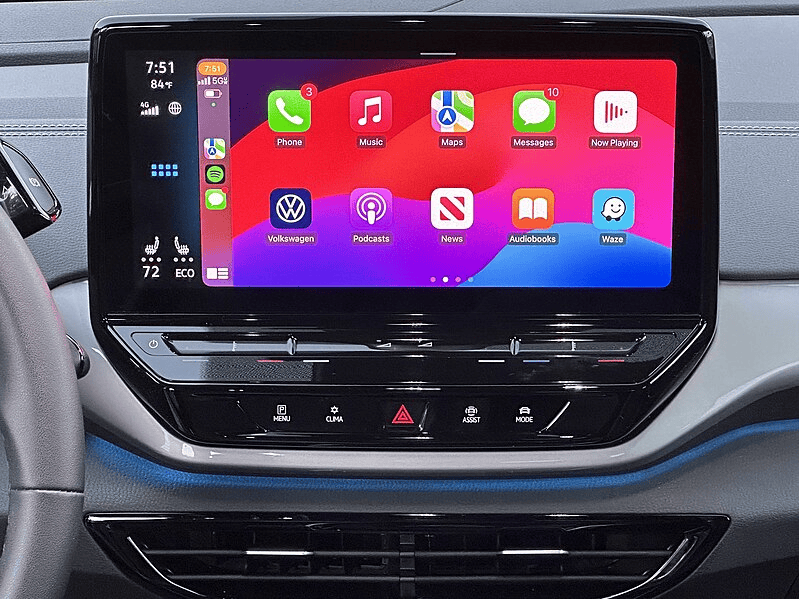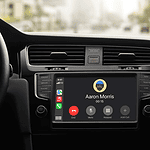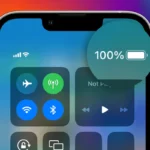In today’s tech-driven world, staying connected on the road isn’t just a luxury—it’s an expectation. Apple CarPlay and Android Auto have revolutionized in-car infotainment, transforming standard dashboards into smart interfaces that seamlessly integrate with your smartphone. Whether you’re navigating city streets, streaming your favorite playlist, or responding to messages hands-free, these platforms bring the convenience of your phone directly to your car’s display.
But while both systems share common goals, they cater to different audiences with distinct approaches. So, which one is right for you? Let’s break it down.

Seamless Smartphone Integration
At their core, CarPlay and Android Auto mirror your phone’s essential functions on your car’s touchscreen, ensuring a distraction-free experience. However, their compatibility is straightforward:
- Apple CarPlay works exclusively with iPhones (iOS 7.1 or later).
- Android Auto is designed for Android smartphones (Android 6.0 and later).
Your choice is naturally dictated by your device, but beyond that, each platform offers unique advantages.
User Interface: iOS Elegance vs. Android Flexibility
The user experience is where these two systems take different design paths:
- Apple CarPlay follows Apple’s minimalist, app-based interface with large, familiar icons resembling an iPhone’s home screen. It’s clean, intuitive, and requires minimal learning.
- Android Auto takes a more customizable approach with Google’s Material Design, offering a darker theme, information-rich widgets, and quick-access shortcuts for essential features.
If you love the simplicity of iOS, CarPlay delivers a familiar, no-frills experience. If you prefer a system with more adaptability and at-a-glance information, Android Auto takes the lead.
Voice Assistants: Siri vs. Google Assistant
A hands-free driving experience is crucial for safety, and both platforms integrate powerful AI assistants to keep your focus on the road.
- CarPlay relies on Siri, which excels at Apple ecosystem tasks like messaging, calls, and Apple Music.
- Android Auto uses Google Assistant, which offers a more conversational, context-aware experience and integrates seamlessly with Google Maps, Gmail, and third-party apps.
If you already rely on Google Assistant in your daily life, Android Auto provides a more robust and intelligent voice experience. However, if you’re an iPhone user, Siri keeps things simple and familiar.

Navigation: Apple Maps vs. Google Maps (and More!)
Navigation is a major part of any infotainment system, and here’s how they compare:
- CarPlay supports Apple Maps, Google Maps, and Waze (a relatively recent addition).
- Android Auto primarily relies on Google Maps and Waze (Apple Maps is not an option).
For most drivers, Google Maps remains the gold standard for accuracy and real-time traffic updates, giving Android Auto an edge in this department. However, with Apple Maps continually improving, CarPlay users won’t feel left behind.
App Support: Music, Messaging & More
Both platforms offer a rich ecosystem of apps, including:
✔ Music & Podcasts: Spotify, Apple Music, Amazon Music, YouTube Music, Audible
✔ Messaging: iMessage, WhatsApp, Messenger
✔ Navigation: Google Maps, Apple Maps, Waze

Image: Sunnyboy122, CC0, via Wikimedia Commons
Apple CarPlay is more restrictive with third-party apps, ensuring a curated experience. Android Auto allows greater flexibility, supporting more apps outside of Google’s ecosystem.
Wireless Connectivity: Cutting the Cord
- CarPlay offers wireless connectivity in most modern vehicles, allowing a completely cable-free experience.
- Android Auto also supports wireless connections, but availability varies by car manufacturer and phone model.
Customization & Performance
If you like to personalize your experience, Android Auto lets you tweak layouts, add widgets, and even use third-party launchers. CarPlay, on the other hand, keeps customization minimal, ensuring a streamlined experience.
Performance-wise, CarPlay is known for its stability and smooth operation, while Android Auto occasionally experiences lag or connectivity hiccups, depending on the phone and vehicle compatibility.
Which One is Right for You?
🚘 Choose Apple CarPlay if you:
✅ Use an iPhone and want a seamless, reliable, and intuitive experience.
✅ Prefer a clean, straightforward interface with limited customization.
✅ Want effortless integration with Siri and Apple’s ecosystem.
🚘 Choose Android Auto if you:
✅ Use an Android phone and rely on Google Assistant for smarter voice commands.
✅ Prefer Google Maps or Waze as your primary navigation tool.
✅ Want more control over the interface and app choices.
Final Verdict
Both Apple CarPlay and Android Auto deliver an enhanced, safer driving experience, making your car an extension of your smartphone. CarPlay excels in stability and ease of use, while Android Auto offers greater flexibility and a smarter voice assistant.
Ultimately, your choice boils down to your smartphone preference—whichever ecosystem you’re already invested in will determine which system feels most natural to you. No matter which you choose, both platforms ensure you stay connected, entertained, and focused on the road ahead.
Apple CarPlay vs. Android Auto
| Feature | Apple CarPlay | Android Auto |
|---|---|---|
| Phone Compatibility | iPhones only | Android phones only |
| Interface | Clean, simple, user-friendly | More customizable, can be more complex |
| Navigation | Apple Maps (improving, but sometimes lags) | Google Maps (generally considered superior) |
| Voice Assistant | Siri | Google Assistant |
| App Compatibility | Curated selection, generally good quality | Wider range of apps, more open ecosystem |
| Customization | Limited customization | More customizable interface |
| Ease of Use | Generally considered easier to learn | Can have a steeper learning curve for some |
| Updates | Tied to iOS updates | Updated independently of phone OS |
| Privacy | Apple’s privacy focus | Google’s data collection practices |
| Integration | Seamless with Apple ecosystem | Strong integration with Google services |
Key Takeaways
- CarPlay and Android Auto mirror smartphone functions to your car’s display for safer driving
- Voice assistants enable hands-free control of navigation, music, and messaging
- Smartphone compatibility determines which system works with your vehicle
Comparison of Key Features Between Apple CarPlay and Android Auto
CarPlay and Android Auto offer distinct advantages in smartphone integration, navigation, media control, and communication features for modern vehicles’ infotainment systems. Each platform brings unique strengths to enhance the driving experience through specialized apps and interfaces.
Compatibility and Integration
CarPlay requires an iPhone running iOS 7.1 or newer, while Android Auto works with Android phones running version 6.0 (Marshmallow) or higher.
Android Auto supports a wider range of vehicle manufacturers and aftermarket head units compared to CarPlay. Both systems now offer wireless connectivity in select vehicles.
Connection methods vary by car model:
- Wired: USB cable connection
- Wireless: Bluetooth + Wi-Fi
- Hybrid: Both wired and wireless options
Navigation and Maps
CarPlay supports Apple Maps, Google Maps, and Waze. Apple Maps provides clean visuals and seamless Siri integration.
Android Auto offers Google Maps as its primary navigation tool, featuring:
- Real-time traffic updates
- Lane guidance
- Speed limit warnings
- Points of interest
Google Maps offers more detailed mapping data and superior traffic prediction compared to Apple Maps. Both platforms support offline maps for areas without cellular coverage.
Music and Media
Both systems support major streaming services:
- CarPlay: Apple Music, Spotify, Pandora, YouTube Music
- Android Auto: YouTube Music, Spotify, Amazon Music, Pandora
Android Auto allows easier switching between media apps through its quick launch bar. CarPlay presents a more organized grid layout for media apps.
Media controls include play/pause, skip tracks, and volume adjustment through both touch and voice commands.
Voice Assistance and Controls
Google Assistant provides more natural language recognition and contextual awareness compared to Siri. Both assistants handle:
- Navigation requests
- Music control
- Message dictation
- Phone calls
- Weather updates
Voice command accuracy rates are higher with Google Assistant, especially for location names and contact information.
Messaging and Communication
Both platforms support hands-free messaging through native and third-party apps like WhatsApp and Facebook Messenger.
Message handling differences:
- CarPlay: Shows message previews, offers quick replies
- Android Auto: Focuses on voice-only interaction for safety
Phone calls appear similarly on both platforms with large, easy-to-tap buttons and clear contact information displays.
User Interface and Experience
CarPlay uses a familiar iOS-style grid layout with large, colorful app icons. Android Auto adopts a card-based interface with a persistent navigation bar.
Screen layouts:
- CarPlay: Home screen grid, customizable app arrangement
- Android Auto: Bottom bar navigation, contextual cards
Touch response and animations are smoother on CarPlay, while Android Auto prioritizes information density.
App Support and Customization
Android Auto offers more third-party app support, especially for messaging and navigation apps. CarPlay maintains stricter app guidelines but ensures consistent quality.
Available apps by category:
- Navigation: 5+ options on Android Auto, 3 on CarPlay
- Messaging: 15+ on Android Auto, 8+ on CarPlay
- Music: Similar selection on both platforms
Android Auto allows more interface customization through widgets and quick settings. CarPlay provides a more controlled but polished experience.
Frequently Asked Questions
CarPlay and Android Auto each provide unique features for integrating smartphones with car infotainment systems. The choice between them depends on specific needs like navigation preferences, device compatibility, and audio quality.
What are the main differences between Apple CarPlay and Android Auto?
CarPlay works exclusively with iPhones, while Android Auto requires Android phones. The interfaces reflect their respective operating systems – CarPlay mirrors iOS design, and Android Auto follows Material Design principles.
The voice assistants differ too – Siri for CarPlay and Google Assistant for Android Auto. Google Assistant processes natural language more effectively for hands-free control.
How does the integration of Waze differ in Apple CarPlay compared to Android Auto?
Waze runs natively on Android Auto with full feature access. CarPlay added Waze support more recently, offering core navigation but fewer customization options.
The app launches faster on Android Auto and provides more detailed traffic alerts. CarPlay’s Waze integration focuses on basic routing functions.
Are there advantages to using Apple CarPlay over Android Auto in terms of sound quality?
CarPlay supports high-quality audio codecs like AAC. It maintains consistent audio quality across music streaming apps.
Android Auto uses standard Bluetooth codecs. Audio quality varies between car models and phone types.
Can Apple CarPlay functionalities be accessed on an Android phone?
CarPlay remains exclusive to iOS devices. No official method exists to run CarPlay on Android phones.
Third-party apps attempt to mimic CarPlay features but lack full functionality and Apple’s security measures.
What are the pros and cons of using Apple CarPlay versus Android Auto?
CarPlay offers seamless iOS integration and reliable performance. Its limitations include restricted app support and Apple Maps as the default navigator.
Android Auto provides more app choices and superior maps. Its drawbacks include occasional stability issues and varying performance across devices.
How does the stability of Android Auto compare to that of Apple CarPlay?
CarPlay maintains consistent performance across supported iPhone models. Connection drops rarely occur with proper hardware.
Android Auto’s stability varies by phone manufacturer and Android version. Recent updates have improved reliability, but some users report occasional crashes.







